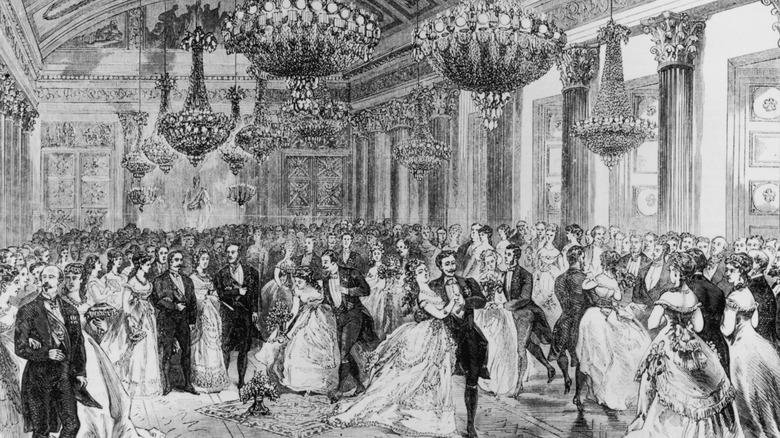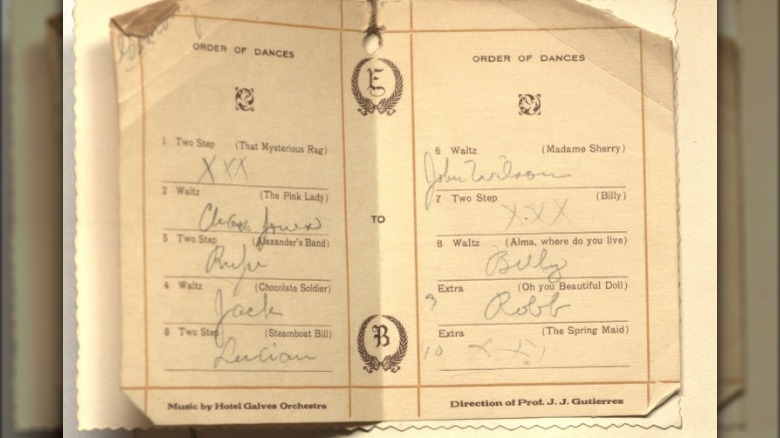What Are Dance Cards And Why Don't We Use Them Anymore?
Dancing could be considered one of humanity's favorite ways to move our bodies. According to Dance Facts, the earliest evidence of dancing exists in 9,000-year-old cave paintings in India, which means, humans have been getting their groove on for quite a long time. From religious ceremonies to social gatherings, dancing has been a part of almost every culture across the world.
Over the centuries, music styles, dance moves, and societal expectations around dancing also changed. By the Victorian era, things in the dance world were definitely a bit more ... rigid to say the least, (per How Stuff Works). Societal rules around what constituted "proper decorum" were particularly strict during this time, and that applied even to fun social activities like parties or dances. When you attended one of these functions, you were expected to behave accordingly. One of the ways they ensured proper etiquette was followed was by introducing the concept of the dance card.
Out of style these days
According to How Stuff Works, a dance card is a small printed card that contains all of the types of dances that were to take place at that particular event. Next to the list of dances was a space for a young man to write his name, committing to dance with the young lady that owned the card for that particular song. The card allowed patrons to do a couple of things. It allowed women to keep track of their dance partners and made sure that a lady didn't need to ask a man to dance. Heaven forbid a woman make the first move, right?
While dance cards sound like loads of fun, we no longer use them. Dance cards fell out of style when society shifted away from the super formal balls and parties, (per Uncommon Courtesy.) Generally, people aren't doing dances like the Foxtrot during your average house party so therefore there isn't exactly a need for them. These days dancing is a lot more casual and carefree, allowing people to choose their partners whenever and however they like, no card required.

